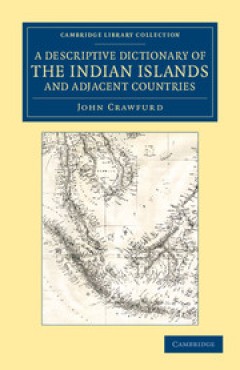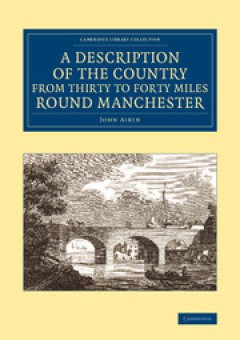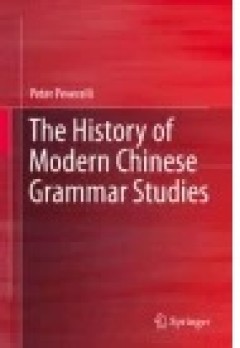Filter by

A Descriptive Dictionary of the Indian Islands and Adjacent Countries
Orientalist and colonial administrator John Crawfurd (1783–1868) published this work in 1856. He went to Calcutta as an assistant surgeon in the East India Company, then moved into administration, accompanying political missions to Java, Bali and Celebes, and heading missions to Siam, Vietnam and Burma. Retiring to England in 1828, Crawfurd became a Fellow of the Royal Society and President o…
- Edition
- -
- ISBN/ISSN
- 9781139199070
- Collation
- -
- Series Title
- Cambridge Library Collection - Travel and Exploration in Asia
- Call Number
- -

A Chronological History of North-Eastern Voyages of Discovery: And of the Ear…
Rear-Admiral James Burney (1750–1821), brother of the novelist Fanny Burney and son of the musicologist Dr Charles Burney, is best known for his five-volume compilation of voyages in the Pacific Ocean (also reissued in this series). He began his maritime career at the age of ten, as a captain's servant. Five years later he became a naval officer, and from 1772 to 1780 served on Cook's second …
- Edition
- -
- ISBN/ISSN
- 9781139177566
- Collation
- -
- Series Title
- -
- Call Number
- -

A Brief Narrative of an Unsuccessful Attempt to Reach Repulse Bay: Through Si…
This short work, featuring a number of attractive engravings, traces an abortive expedition to the Canadian Arctic. George Francis Lyon (1795–1832), naval officer and explorer, had accompanied William Parry on a previous expedition in search of the North-West Passage. In 1824 Lyon was instructed to return to Repulse Bay and to explore the mainland. Unfavourable weather conditions forced Lyon …
- Edition
- -
- ISBN/ISSN
- 9781107281202
- Collation
- -
- Series Title
- -
- Call Number
- -

A Description of the Country from Thirty to Forty Miles round Manchester
The late eighteenth century saw Manchester and its surrounding areas undergo significant change as industrialisation fuelled urbanisation and population growth. In this classic 1795 account, the physician and prolific writer John Aikin (1747–1822) gathers together information on the settlements at the heart of manufacturing and trade in north-west England, covering the vital network of waterw…
- Edition
- -
- ISBN/ISSN
- 9781107706101
- Collation
- -
- Series Title
- Cambridge Library Collection - British & Irish History, 17th & 18th Centuries
- Call Number
- -

A Description of Patagonia, and the Adjoining Parts of South America
Thomas Falkner (1707–84), one-time pupil of both Richard Mead and Isaac Newton, was an English Jesuit missionary who lived for nearly forty years in South America until 1767, when he returned to England following the Jesuits' expulsion from Córdoba. Originally published in 1774 in the hope that it 'might be of some public utility, and might also afford some amusement to the curious', this is…
- Edition
- -
- ISBN/ISSN
- 9781139775472
- Collation
- -
- Series Title
- Cambridge Library Collection - Latin American Studies
- Call Number
- -

A Description of British Guiana, Geographical and Statistical
Sir Robert Hermann Schomburgk (1804–1865) was a German-born surveyor and traveller. In 1835–1839 he explored British Guiana for the Royal Geographical Society. In 1840 he was appointed to define its boundaries with Brazil, as Brazilian encroachments were wiping out native tribes. His report to the Colonial Office was published as A Description of British Guiana, Geographical and Statistical…
- Edition
- -
- ISBN/ISSN
- 9780511783586
- Collation
- -
- Series Title
- Cambridge Library Collection - Latin American Studies
- Call Number
- -

Foot Steps of the Ancient Great Glacier of North America
John K. DeLaski, M.D. practiced medicine in the Penobscot Bay region of Maine and, in addition, was a naturalist with keen powers of observation. His study of the landscape led to the conclusion that a thick glacier had overtopped the highest hills, flooded all of Penobscot Bay, extended far to the east and west and probably was part of a greater continental glacier. He published these very cri…
- Edition
- -
- ISBN/ISSN
- 978-3-319-13200-6
- Collation
- X, 202 hlm.
- Series Title
- -
- Call Number
- -

The Most Dreadful Visitation : Male Madness in Victorian Fiction
Victorian literature is rife with scenes of madness, with mental disorder functioning as everything from a simple plot device to a commentary on the foundations of Victorian society. But while madness in Victorian fiction has been much studied, most scholarship has focused on the portrayal of madness in women; male mental disorder in the period has suffered comparative neglect. In ‘The Most D…
- Edition
- -
- ISBN/ISSN
- -
- Collation
- -
- Series Title
- Liverpool English Texts and Studies
- Call Number
- 808.83

The History of Modern Chinese Grammar Studies
This book discusses the way Chinese scholars developed a national grammar. Chinese didn’t develop grammar until China’s contact with Western grammar books in the 19th Century. The first indigenous grammar was published in 1889. It included some traditional notions, but mainly imitated European grammar. It was followed by a number of other similar works. To move away from this imitation, a g…
- Edition
- 1
- ISBN/ISSN
- 978-3-662-46504-2
- Collation
- XII, 204, 8 b/w illustrations
- Series Title
- The History of Modern Chinese Grammar Studies
- Call Number
- -

The History of Modern Chinese Grammar Studies
This book discusses the way Chinese scholars developed a national grammar. Chinese didn’t develop grammar until China’s contact with Western grammar books in the 19th Century. The first indigenous grammar was published in 1889. It included some traditional notions, but mainly imitated European grammar. It was followed by a number of other similar works. To move away from this imitation, a g…
- Edition
- -
- ISBN/ISSN
- 978-3-662-46504-2
- Collation
- XII, 204
- Series Title
- -
- Call Number
- -
 Computer Science, Information & General Works
Computer Science, Information & General Works  Philosophy & Psychology
Philosophy & Psychology  Religion
Religion  Social Sciences
Social Sciences  Language
Language  Pure Science
Pure Science  Applied Sciences
Applied Sciences  Art & Recreation
Art & Recreation  Literature
Literature  History & Geography
History & Geography